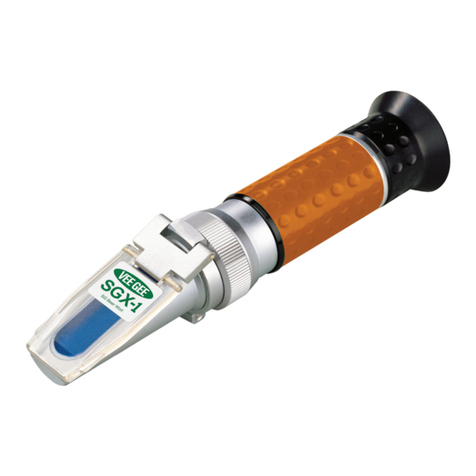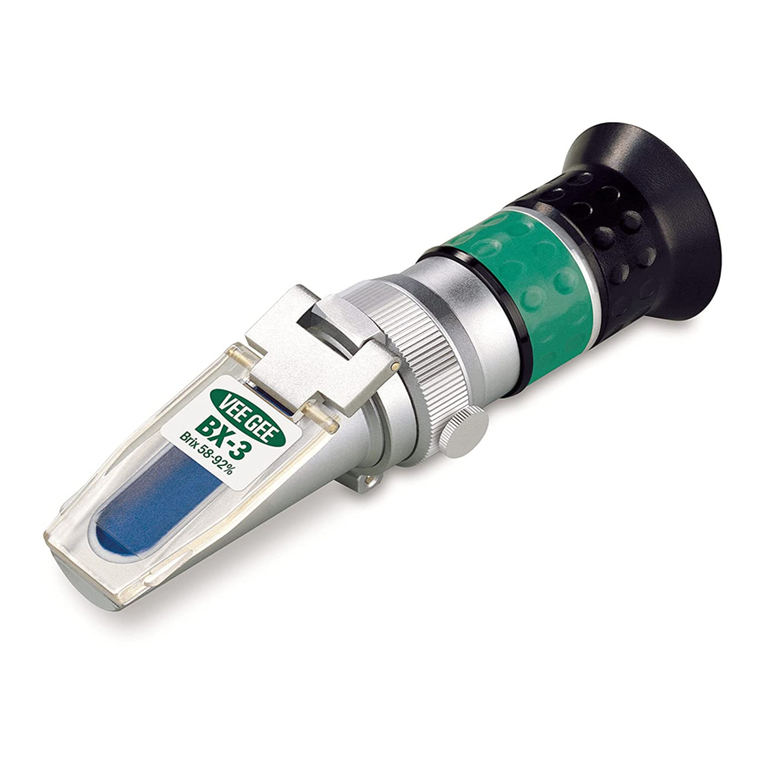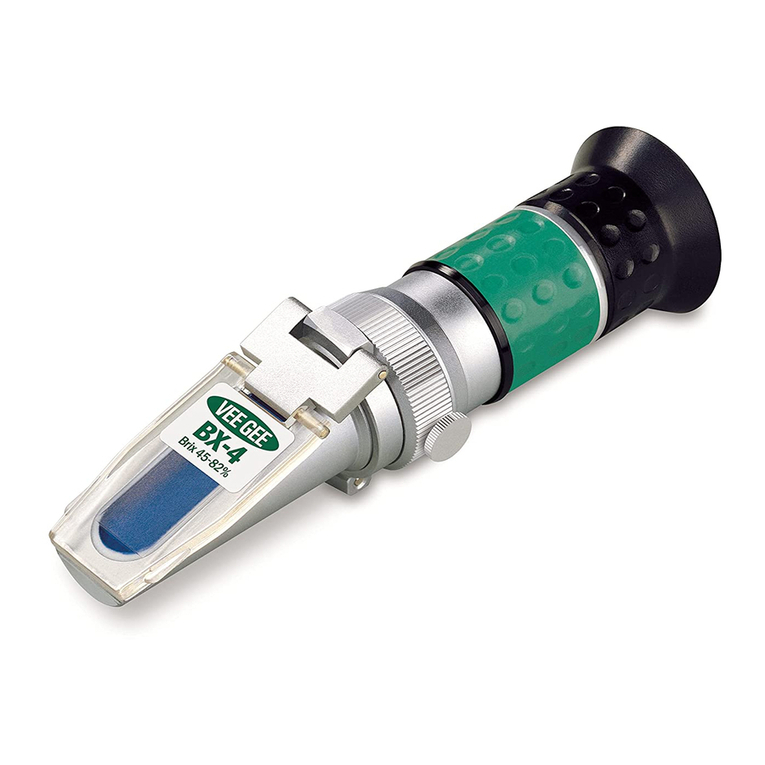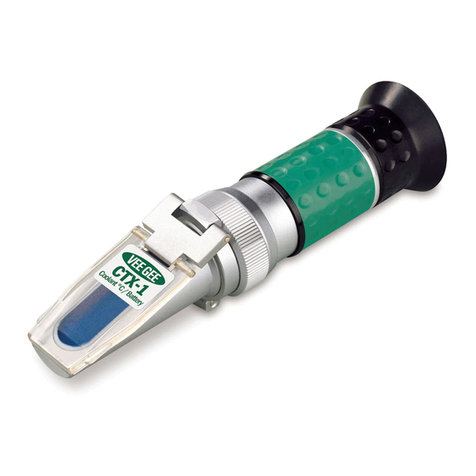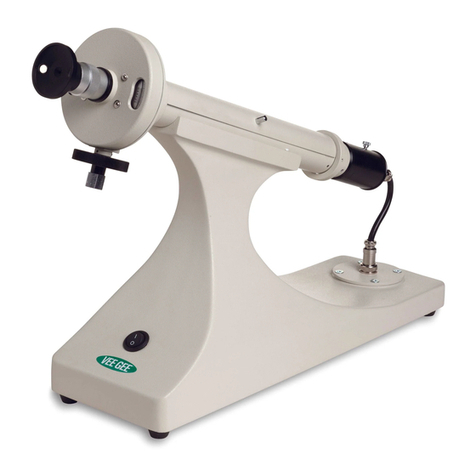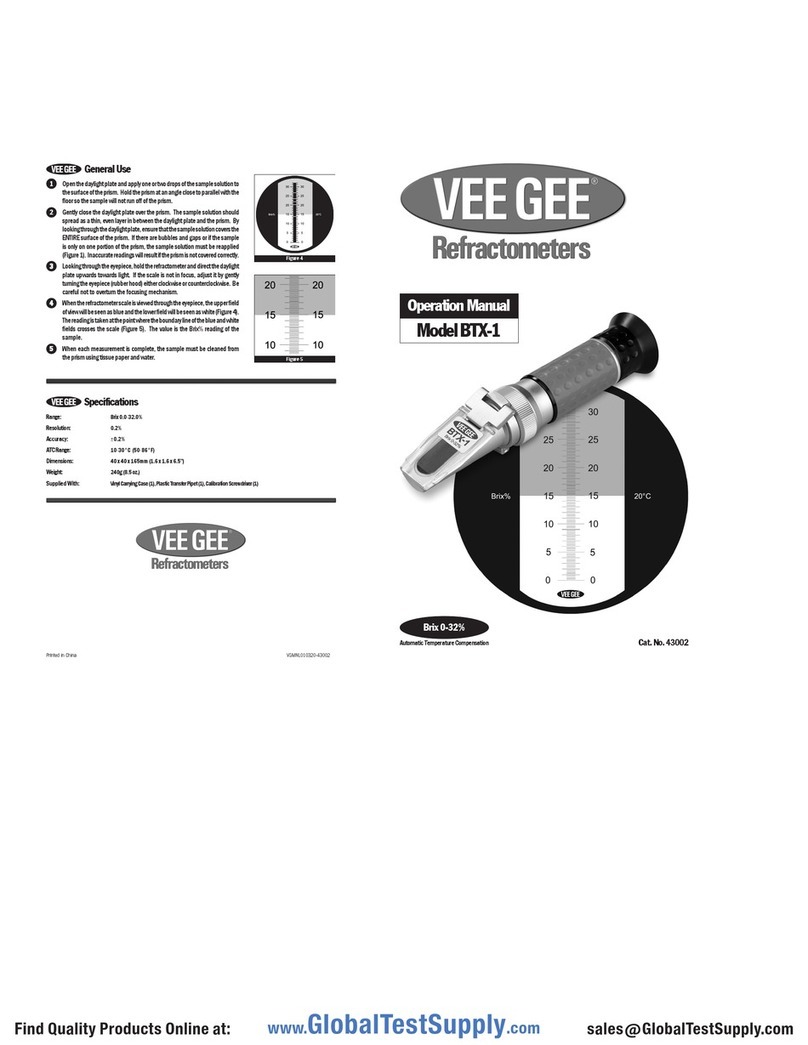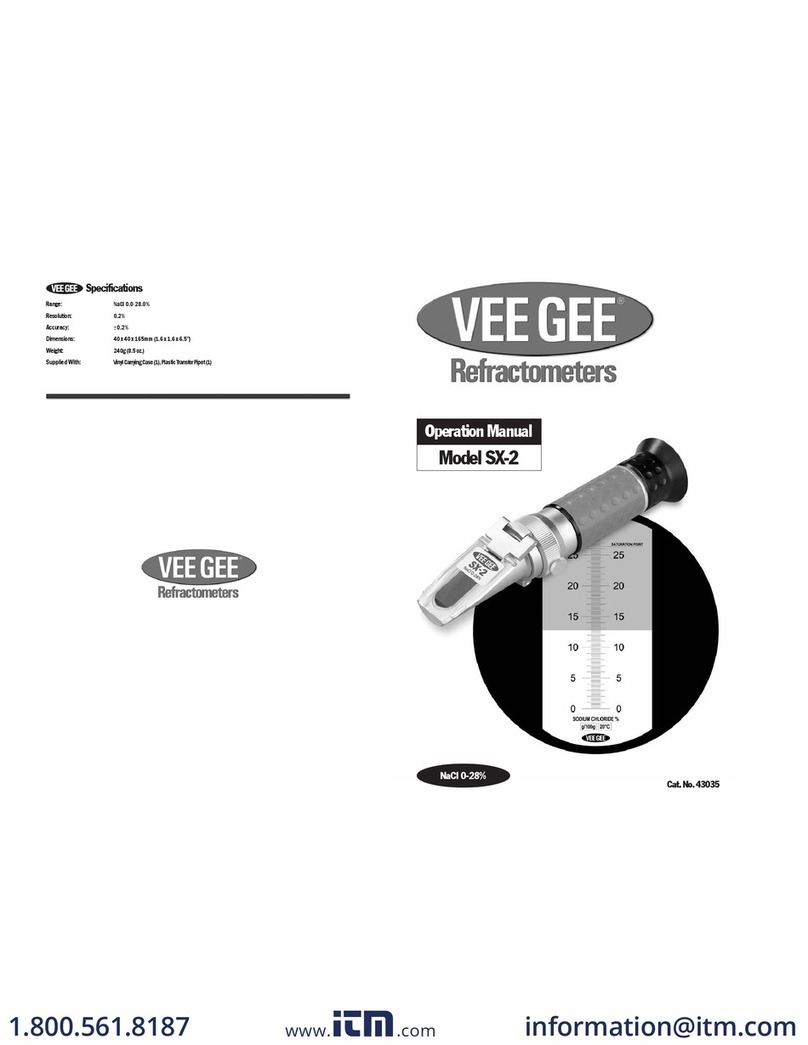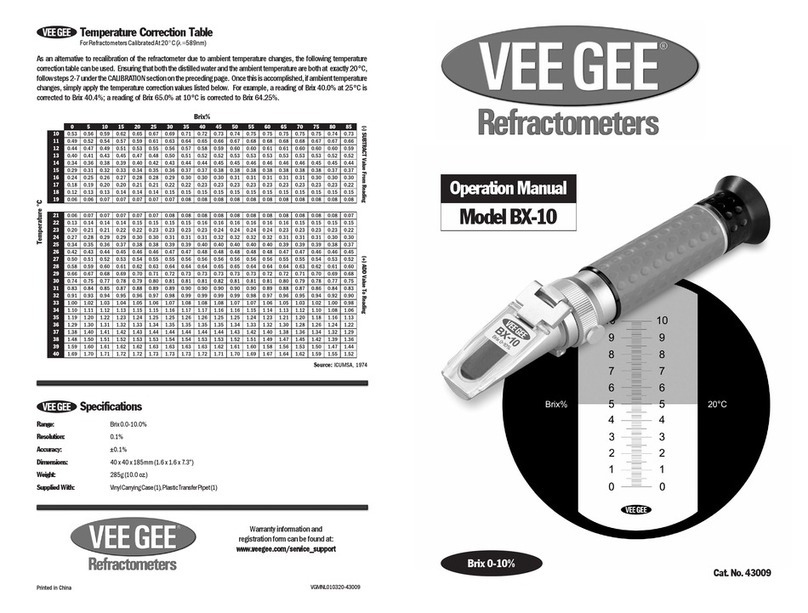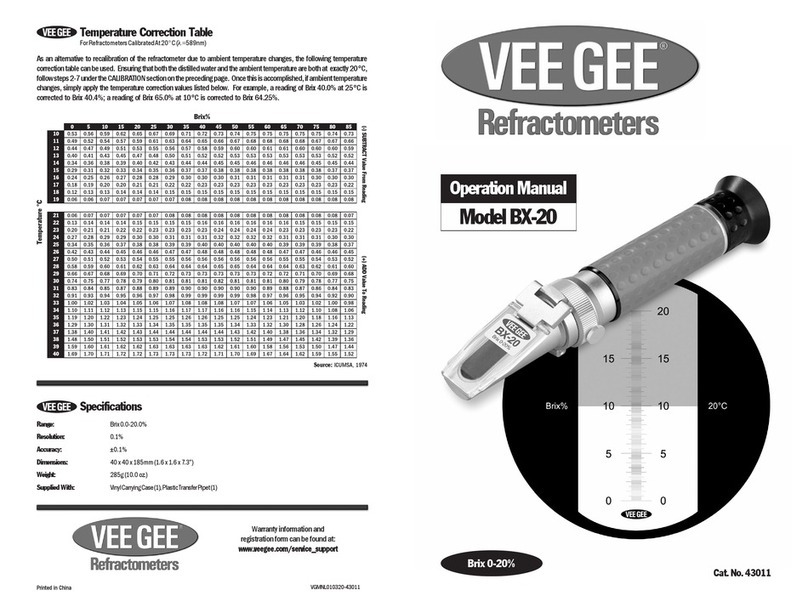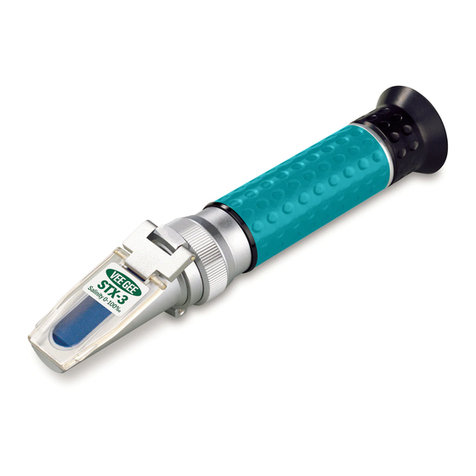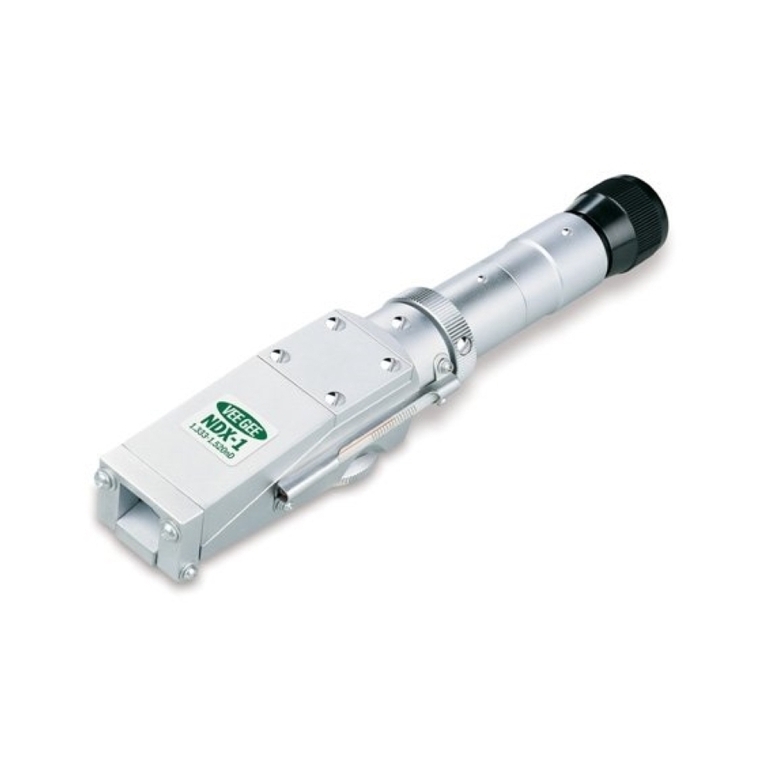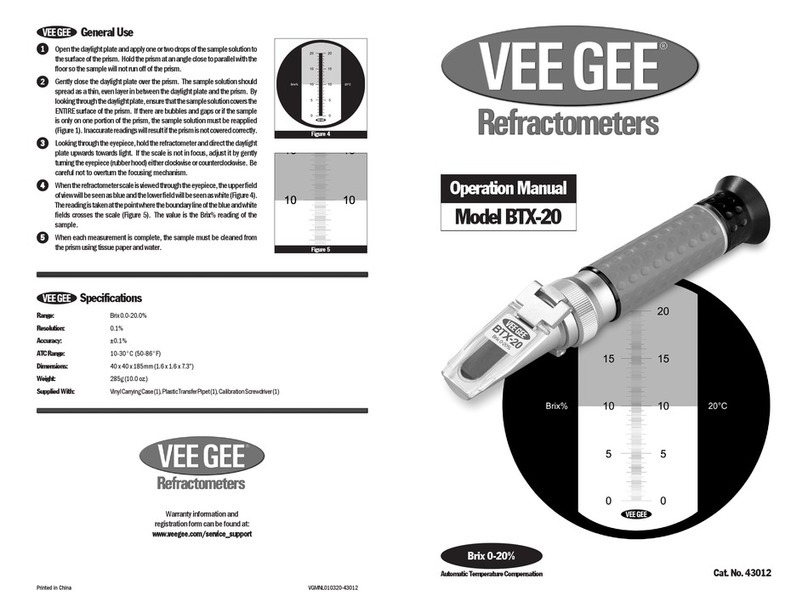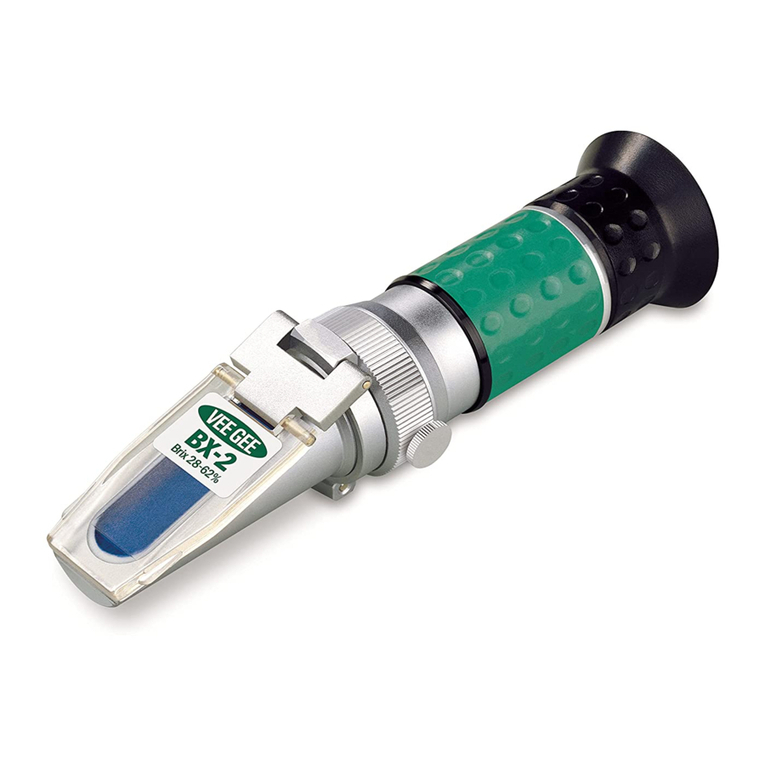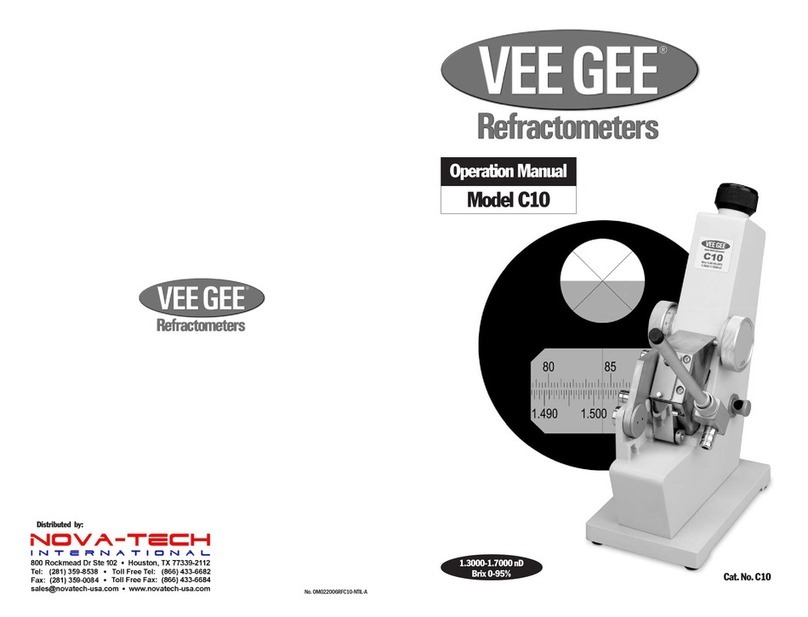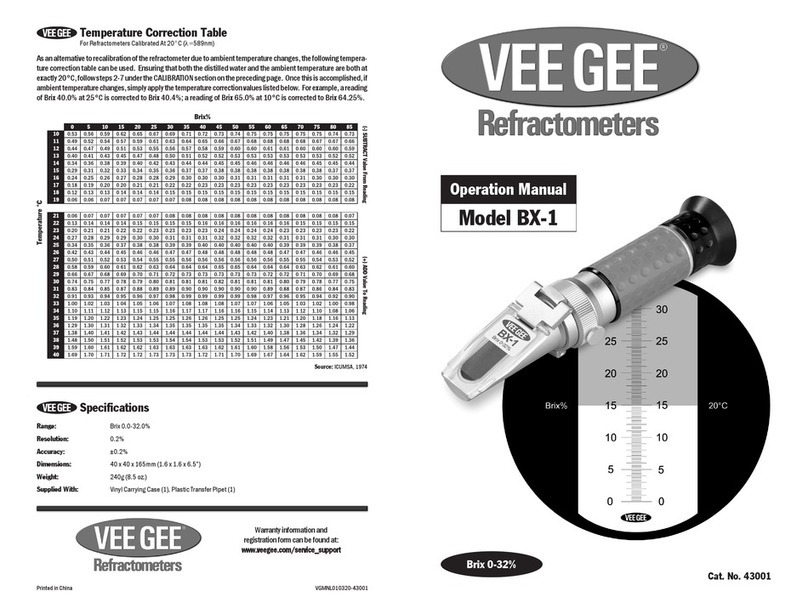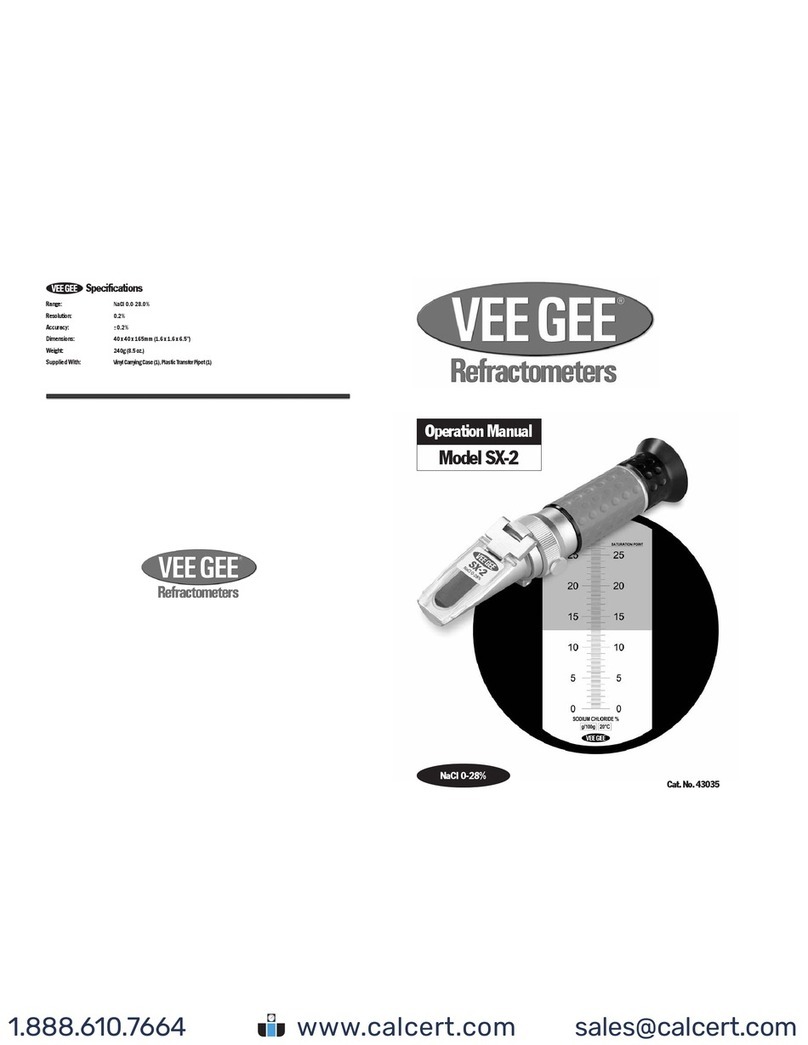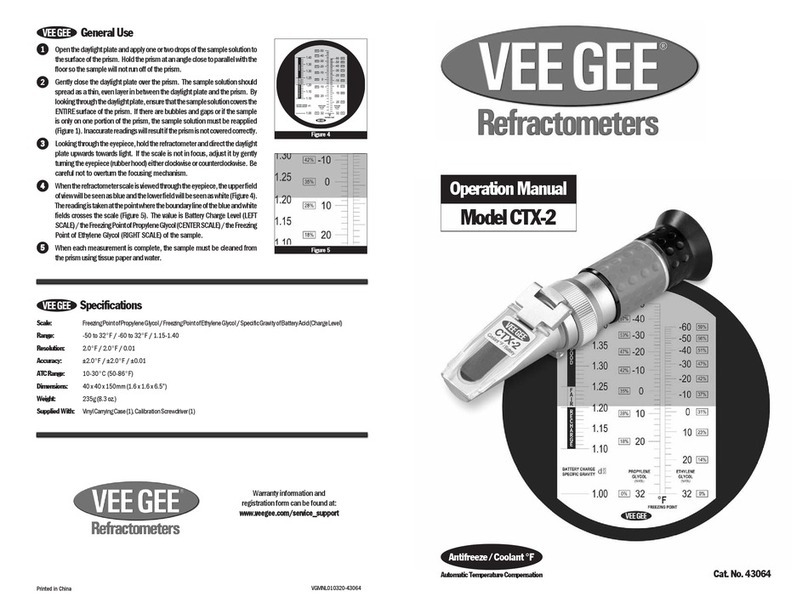Refractometer Components
This refractometer is an optical instrument -- it can become damaged if dropped or handled in a rough manner.
Theprism ismade ofoptical glassand issusceptible toscratches --do notapply anyrough orabrasive materialand take
care when cleaning the prism.
After each use, clean the prism surface and daylight plate with a soft cloth or tissue soaked in water and wipe off with
a dry cloth or tissue.
Do not hold the refractometer under a stream of water from a faucet. Do not splash it with or dip it in water.
If the surface of the prism becomes coated with an oily solution or similar, it will repel test samples and affect readings.
If this occurs, the prism should be cleaned with a weakened detergent or similar solvent.
2 3
1
2
55
55
5
44
44
4
33
33
3
Calibration
Precautions
Calibration should be conducted at the start of each day or when any shifts
in ambient temperature occur.
Openthe daylight plateand applyone or twodrops of distilledwater onto the
surfaceof theprism. Hold theprism at anangle closeto parallelwith thefloor
so the distilled water will not run off of the prism.
Gently close the daylight plate over the prism. The distilled water should
spread as a thin, even layer in between the daylight plate and the prism. By
looking through the daylight plate, ensure that the distilled water covers the
ENTIRE surface of the prism. If there are bubbles and gaps or if the distilled
wateris onlyon oneportion ofthe prism,the distilled watermust bereapplied
(Figure1). Inaccuratecalibrations willresultif theprism isnotcovered correctly.
Looking through the eyepiece, hold the refractometer and direct the daylight
plate upwards towards light. If the scale is not in focus, adjust it by gently
turning the eyepiece (rubber hood) either clockwise or counterclockwise. Be
careful not to overturn the focusing mechanism.
When the refractometer scale is viewed through the eyepiece, the upper field
ofview will be seenas blue and thelower field willbe seen as white(Figure 2).
Confirm that the boundary line crosses the scale at “0” (Figure 3).
Ifthe boundary linefallsabove orbelow zero,gentlyloosen theset screwonthe
calibrationring. While lookingthroughthe eyepiece,gently turnthe calibration
ringclockwise orcounterclockwise untilthe boundaryline isat zero. Oncethis
is achieved gently tighten down the set screw. (NOTE: Do not over-tighten. If
the set screw is over-tightened, the boundary line may shift slightly).
When calibration is complete, gently wipe the prism using tissue paper.
Thank you for purchasing this VEE GEE Refractometer. With the user in mind, VEE GEE Refractometers are built from modern
designs and, with proper care, this instrument should provide many years of reliable performance. It’s recommended this
manual is read entirely before using the refratometer for the first time.
Introduction
Figure 1
Figure 2
Figure 3
Figure 4
Figure 3
1
2
55
55
5
44
44
4
33
33
3
General Use
Open the daylight plate and apply one or two drops of the sample solution to
the surface of the prism. Hold the prism at an angle close to parallel with the
floor so the sample will not run off of the prism.
Gently close the daylight plate over the prism. The sample solution should
spread as a thin, even layer in between the daylight plate and the prism. By
lookingthrough thedaylight plate,ensure thatthe samplesolution coversthe
ENTIRE surface of the prism. If there are bubbles and gaps or if the sample
is only on one portion of the prism, the sample solution must be reapplied
(Figure 1). Inaccurate readings will result if the prism is not covered correctly.
Looking through the eyepiece, hold the refractometer and direct the daylight
plate upwards towards light. If the scale is not in focus, adjust it by gently
turning the eyepiece (rubber hood) either clockwise or counterclockwise. Be
careful not to overturn the focusing mechanism.
When the refractometer scale is viewed through the eyepiece, the upper field
ofview will be seenas blue and thelower field willbe seen as white(Figure 4).
Thereading istaken atthe pointwhere theboundary lineof theblue andwhite
fields crosses the scale (Figure 5). The value is the Sodium Chloride (g/
100g) reading of the sample.
When each measurement is complete, the sample must be cleaned from
the prism using tissue paper and water. Figure 5
Figure 3
66
66
6
77
77
7
Calibration Ring
Mechanismusedtozeroorcalibratetherefractometer,
withouttherequirementofadditionaltools.
Rubber Hood
Houses and protects the focusable lens. Prevents
lightfromenteringthroughthe eyepiece during use.
Rubber Grip
Insulatestherefractometeragainsthand
heatforaccurateresults.
Non-Roll Stand
Protectsagainstdamagetotheinstrumentwhen
setdownbetweenmeasurements.
Daylight Plate & Prism
The prism and sample are covered by the
daylightplate duringreadings.
Calibration Ring Set Screw
Securesthecalibration ring inplacetoprotect
fromanyshifts which couldoccurduring use.
